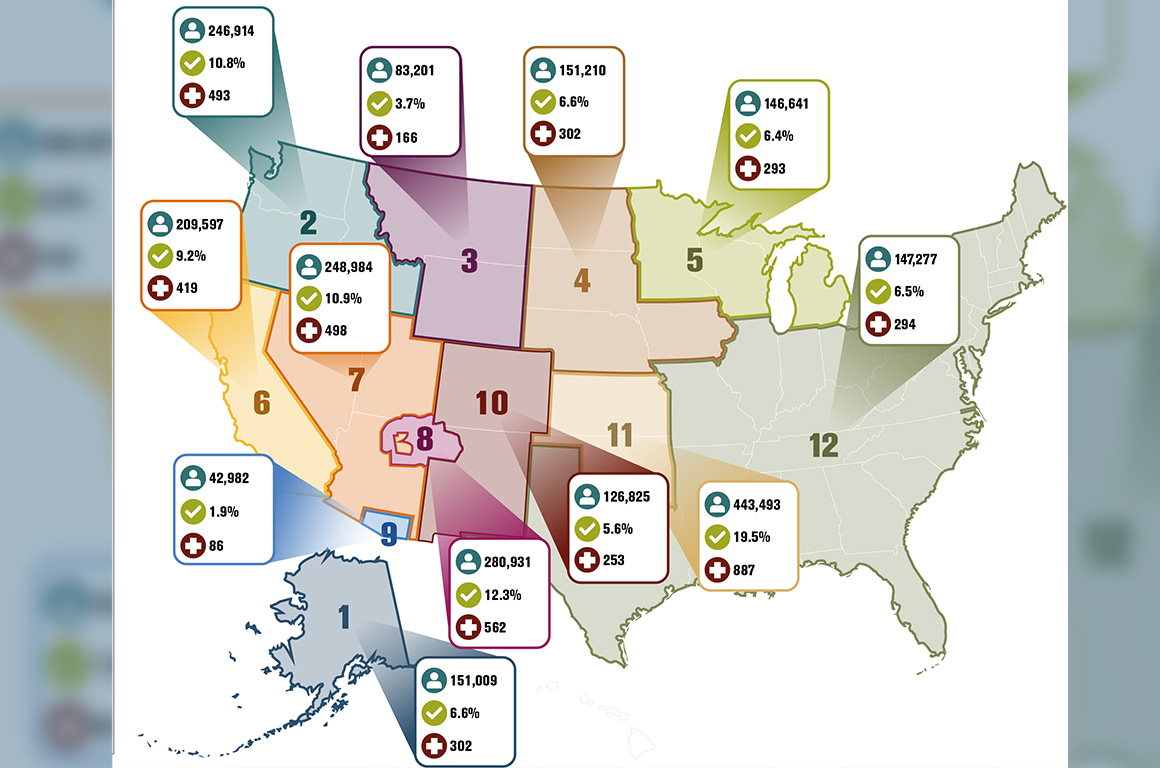Overview
KAI conducted the first evaluation of the Indian Health Service’s Community Health Representative (CHR) program to understand the impacts of CHRs in tribal communities and on the health of AI/AN. To understand the potential impacts of CHRs on AI/AN health, KAI conducted a mixed-method evaluation through qualitative methods of a literature review, key informant interviews, and focus group discussions, which prefaced the quantitative methodology of a CHR survey.
Challenges
Several limitations emerged throughout the evaluation. For the survey, the experiences and perceptions of CHRs were analyzed as a proxy for client experience. KAI chose CHRs as the survey respondents, rather than CHR clients, based on recommendations from IHS leadership. IHS leadership noted that research with CHR clients requires institutional review board approval from multiple tribes and using patient records to identify CHR clients, which are costly and time-intensive challenges. Further, research on patient experience and its association with outcomes is mixed at best.
The survey results only represent the perceptions of participating CHRs. Because the survey respondents were not a random sample of CHRs, the data presented does not reflect feedback from all CHRs in the broader population. Only CHRs on the contact lists shared by IHS were invited to take the survey. Further, because the CHR contact lists had limited information and national benchmarks describing the CHR population were not available, it was not possible to construct weights that would support generalization to the broader CHR population.
The qualitative coding of open-end responses was somewhat subjective and created imputed data. Due to the small survey sample size, it was only possible to conduct exploratory descriptive analyses; we did not conduct hypothesis testing or attempt multivariable models to examine relationships between survey outcomes. Finally, the data collection period was limited to 6 weeks and three outreach efforts, as indicated in the OMB authorization, which contributed to the low sample size of 115 survey respondents.
Solution
The evaluation included four components: (1) a literature review and a review of testimony related to the CHR program; (2) key informant interviews with IHS headquarters and area leadership; (3) focus groups with CHR program directors, IHS Area CHR Representatives, public health nurses, and environmental health officers; and (4) a survey of CHRs.
KAI worked closely with a subcontractor to create a survey for CHRs to understand their perceived impact on their clients and oversaw the submission of the Office of Management and Budget (OMB) and institutional review board (IRB) paperwork for the survey.
Results
Overall, the evaluation participants perceive the CHR program to have a positive, noticeable impact on the health of tribal communities. Approximately 67% of the CHR survey participants rated the impact of CHRs’ work on the health of tribal communities as a 5 on a scale from 1–5, with 5 having the most positive impact. During the key informant interviews, IHS leadership described the program as “irreplaceable,” and focus group participants described CHRs as the link to public health and health care across Indian Country, connecting patients with a wide array of health and human services.
Respondents perceive CHRs as trusted members of tribal communities who connect their communities with health care and public health. For example, CHRs draw on their tribal membership and familiarity with Native languages, customs, and traditions. However, confusion about the CHR role and inconsistent access to electronic health records and computers, and challenges with billing for CHR services may limit CHRs’ impact.
Evaluation respondents expressed their perception of the CHR program as vital to the provision of culturally appropriate health care. This connection to culturally appropriate care aligns with the IHS FY 2019-2023 Strategic Plan’s first strategic goal: “To ensure that comprehensive, culturally appropriate personal and public health services are available and accessible to American Indian and Alaska Native people.”[1]
Several key findings emerged from the project’s research questions:
- The trust that CHRs establish with patients through shared life experience and culture is perceived as central to the CHR program’s positive impact.
- Through their health education, translation, and transportation services, CHRs are perceived as improving patients’ understanding of medical instructions.
- CHRs are described as vital members of primary care teams.
- Given the remote and rural nature of many tribal communities, CHR transportation services are essential for access to health care.
- CHRs monitor high-risk patients, which helps prevent serious conditions and complications and can reduce emergency-room visits and hospitalizations.
- Confusion about the CHR role among tribal health and IHS administrators may limit the impact of the program.
- The inability to bill Medicaid for stand-alone CHR services in most states may impede the perceived impact and impact measurement of the CHR program.
- Decreases in CHR reporting are due to challenges with computer and electronic health records access, tribes moving off the IHS Resource and Patient Management System, and nonrequired reporting by tribally operated programs, not a decrease in CHR services.
[1] IHS. (2019). Indian Health Service: Strategic Plan: FY 2019-2023. Retrieved from https://www.ihs.gov/sites/strategicplan/themes/responsive2017/display_objects/documents/IHS_Strategic_Plan_FY%202019-2023.pdf
